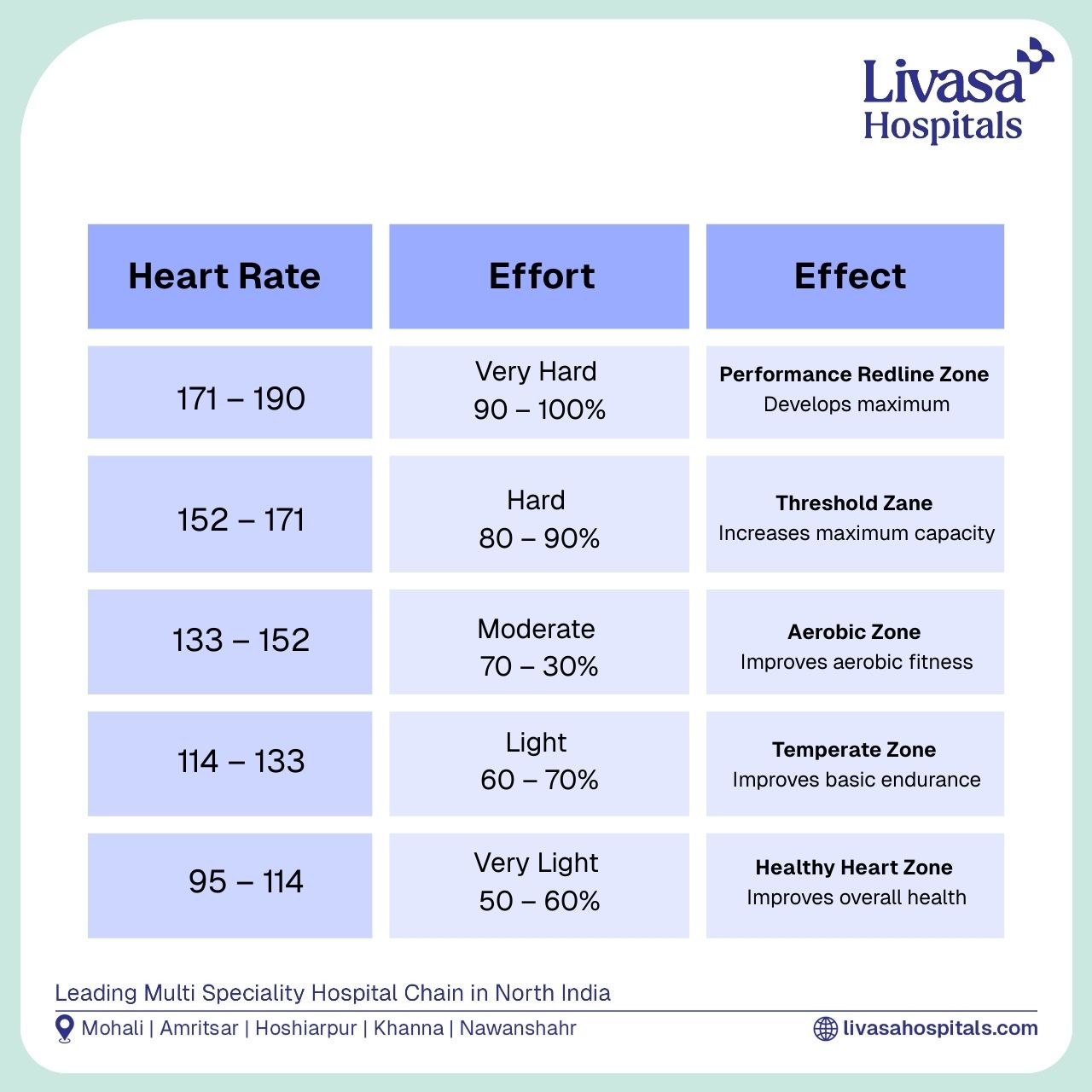17 Nov 2025
Cognitive Rehabilitation & Brain Training Programs Amritsar


Dr. Anil Sharma
30 Jan 2025
Call +91 80788 80788 to request an appointment.
Normal and Dangerous Heart Rate Levels: What You Need to Know
Your heart rate—the number of times your heart beats per minute—is a vital sign of your overall health. It naturally varies based on factors such as age, activity, and health status. Understanding the difference between normal and dangerous heart rate levels is crucial for maintaining cardiovascular health and recognizing when medical attention is needed.
What Is a Normal Heart Rate?
For most adults, a normal resting heart rate ranges from 60 to 100 beats per minute (bpm). However, lower rates are common and healthy for well-trained athletes, sometimes as low as 40 bpm, due to their more efficient hearts. Children have higher typical heart rates, with infants averaging between 100 to 160 bpm, and older children ranging from 70 to 120 bpm.
Several factors influence your normal heart rate, including:
Age: Younger people tend to have faster heart rates.
Fitness Level: Regular physical activity usually lowers resting heart rate.
Body Position: Heart rate can temporarily increase when standing or moving.
Emotional State: Stress or excitement can elevate your heartbeat.
Medications and Health Conditions: Certain drugs and conditions like hyperthyroidism may affect heart rate.
Dangerous Heart Rate Levels to Watch For
Abnormal heart rates—whether consistently too high, too low, or irregular—can indicate health problems requiring prompt evaluation.
Tachycardia (High Heart Rate): A resting heart rate over 100 bpm in adults may signal dehydration, fever, anemia, or serious arrhythmias such as atrial fibrillation. Symptoms like chest pain, dizziness, or breathlessness warrant immediate medical care.
Bradycardia (Low Heart Rate): While below 60 bpm can be normal in athletes, for others it may indicate issues such as hypothyroidism or heart block. Fainting, fatigue, or confusion along with a low heart rate should be promptly assessed.
Arrhythmias (Irregular Heartbeats): Irregular heart rhythms cause the heart to beat too fast, slow, or erratically, potentially leading to complications like stroke if left untreated.
How to Monitor and Maintain a Healthy Heart Rate
Regularly monitoring your heart rate is an effective way to catch abnormalities early. You can check your pulse manually or use wearable devices like fitness trackers and smartwatches for real-time tracking.
To support a healthy heart rate:
Perform regular aerobic exercises including walking, cycling, or swimming.
Manage stress through practices like meditation, yoga, or deep breathing.
Eat a balanced diet rich in fruits, vegetables, and whole grains.
Stay hydrated and limit caffeine and alcohol intake.
Schedule routine medical check-ups, especially if you have underlying health risks.

When to Seek Medical Advice
Reach out to a healthcare provider if you experience sudden or unexplained changes in your heart rate, persistent chest pain, frequent fainting, or if your resting heart rate exceeds 120 bpm or drops below 40 bpm. Early medical intervention can prevent serious complications and promote heart health.
Understanding your normal and dangerous heart rate levels empowers you to take control of your cardiovascular wellness, facilitating early detection and prevention of potential heart issues.
If you need help monitoring your heart rate or managing heart health, consult your healthcare professional today.
Neurotropic Virus Infections: West Nile, Zika, Japanese Encephalitis Amritsar
+91 80788 80788
Livasa Healthcare Group Corporate Office,Phase-8, Industrial Area, Sector 73, Sahibzada Ajit Singh Nagar, Punjab 160071
livasacare@livasahospitals.in
| Mohali | +91-99888 23456 |
| Amritsar | +91-99887 49494 |
| Hoshiarpur | +91-99883 35353 |
| Nawanshahr | +91-75081 82337 |
| Khanna | +91-98888 05394 |